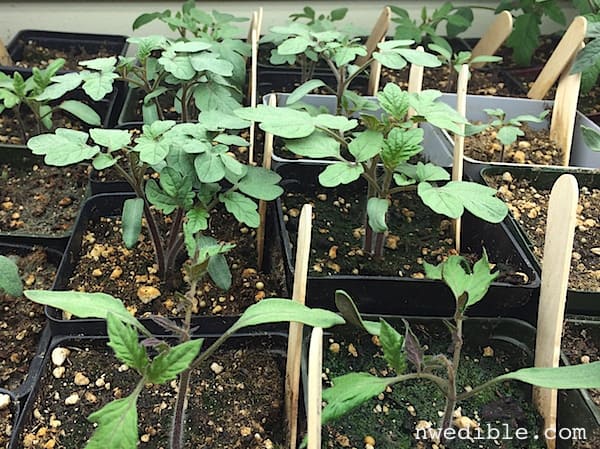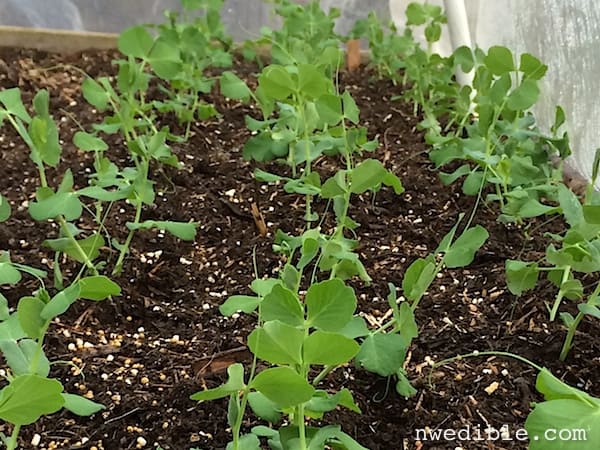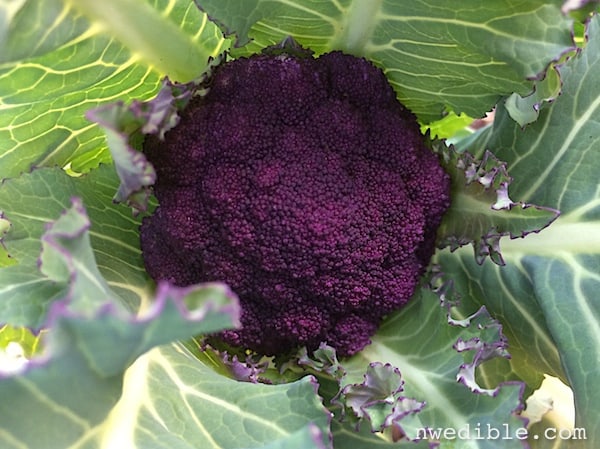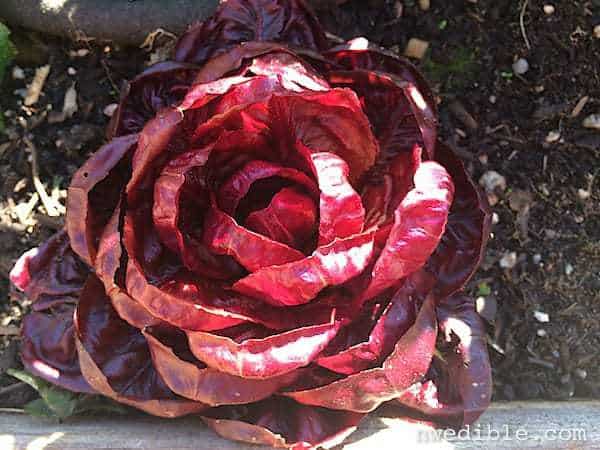In like a lion, out like a lamb. That’s what they say about the weather in March, and I suspect that’ll hold true this year.
There are always two points during the gardening year when you have to just go on faith that the weather will do, more or less, what you expect it to.
The first is now, that earliest transition between late winter and early spring when you start heat-loving veggies like tomatoes and peppers. There might be snow on the ground, or ice on the windows, but you start these sun-worshippers on faith that the summer will come again.
The second is when you start your fall and winter crops in August, hunched over a raised bed, getting sunburned on the back of your neck so that you’ll have crops to dig from the soil when everything hunkers into the grey of winter. Summer seems like an endless jungle of bounty, but we act from that knowledge deep in our little squirrel hearts that days are shortening and a time of renewal will come again.
The greatest activity always happens at the edges – at the transitions – and this winter-to-spring transition is no different. This is a busy month for gardeners.
Here’s what Maritime Northwest gardeners should be doing this March.
If you want to plan with the big picture in mind, download the Year Round Vegetable Planting Guide for free in the Downloadables section. To help keep your plantings and record-keeping organized, I humbly recommend my (not free) downloadable Garden Planner and Journal.
Plan & Purchase

If you haven’t ordered your seed potatoes yet, don’t delay – local potato specialist Irish Eyes Garden Seed is already out of many popular varieties. My absolute favorite variety of potato is French Fingerling. Most garden centers and even many big box and grocery stores are offering seed potatoes at this time of year if specific variety is less critical to you.
- Asparagus Crowns
- Bare Root Fruit Trees
- Bare Root Fruit Bushes, Rhubarb, Cane Fruit and Vines
- Seed Potatoes
- Garlic – yes, you should have done this last fall. But if you didn’t get to it, stick a few cloves of seed garlic in the ground. They’ll do something.
Start Indoors

If you are new to starting your own seeds you might want to check out my three-part Seed Starting 101 series: Key Components For Healthy Seedlings, A Step-by-Step Visual Guide To Growing Seedlings At Home, and Up-Potting.
- Tomatoes – late February or early March is a great time to start tomatoes indoors.
- Peppers & Eggplant – these are more tender than tomatoes, so standard practice is to start them a few weeks after tomatoes. I find it’s just easier to start them at the same time and up-pot them in a gallon pot so they have the longest grow time, but I have a greenhouse for hardening them off through that awkward “cool May and June” time. If you don’t, you may want to start your peppers and eggplants towards the end of the month. Peppers and eggplant germinate very slowly in cool soil, so this is a crop for which you want to break out the seed heater mat (I use this one). Remember to use cool-climate cultivars. Like tomatoes, small peppers and eggplant (think Asian, not Italian) will tend to ripen more reliably than big ones. Give these crops the warmest, sunniest, most protected spot you can.
- Brassicas – broccoli, brussels sprouts, cabbage, cauliflower & kholrabi can all be sown under light lights early this month, or wait until after mid-month and sow outside under a cloche. If you’re going to sow out, make sure your cloche is in place a few weeks before you plan to sow so the soil can warm and dry out somewhat. Watch for slugs! (I use Sluggo. I get a big tub at Costco at this time of year.)
- Hardy Herbs – Parsley, chives, fennel, chervil, oregano, dill, mint, sorrel, marjoram, lemon balm, pansies etc. can be started under lights.
- Salad Greens – Sow salad greens! Once a month at least for continuous harvest! Outside, your seeds will take quite awhile to germinate with soil temps this low.
- Spinach – Just like the other salad greens: new month, more spinach.
- Kale & Collards – They are very hardy and can be started in at the beginning of the month and transplanted out while still small towards the end of the month quite happily. You can also seed them directly. They’ll take a bit longer to germinate but they’ll grow. I usually grow kale year round but if you don’t love it as I do, hold off and grow it as a fall crop.
- Swiss Chard – Start now, or sow outside to a cloche after mid-March.
- Onions & Leeks – Give them a shot from seed (get on this ASAP!) or buy plants. Dixondale is a specialty onion grower who sells very reasonably priced onion plants.
Sow & Plant Outside
Fruit & Perennials:
Nurseries have all their fruit trees and perennials in right now, and companies like Peaceful Valley are shipping bareroot trees now, but selection is going fast so get on it if you are planning on a fruit or nut tree order this spring. As long as the ground isn’t frozen or waterlogged, bare root or potted fruiting trees, bushes and perennials can be planted out. The sooner you can get them in, the better. Don’t let roots of bare root trees dry-out or freeze.
- Bare root fruit trees – these should be put into previously prepared ground while still dormant.
- Bare root fruit bushes (currants, gooseberries, blueberries, etc.) – Everyone loves blueberries, but try white currants for a slightly less common but delicious and attractive landscaping fruit.
- Bare root cane fruits (blackberries, raspberries, etc.) – I’m a big fan of Triple Crown Thornless Blackberry.
- Asparagus crowns – these can be purchased at a good nursery. Look for an all male variety like Jersey Knight.
- Rhubarb crowns – these can be had by dividing established plants or purchased at a good nursery.
- Horseradish roots – these can be invasive! It’s a good idea to plant them in a very large container sunk into the ground to control their roaming.
Vegetables & Annuals
Remember that any veggie sown or transplanted out in March will be happier and give better results under a vented cloche kept in place through mid-April or May. Make sure to prevent heat build-up by venting during the day, especially if it’s sunny! Keep the ground moist enough to assist germination.

- Peas & Favas –I started my first batch of peas and favas inside in early February and transplanted those out a week or so ago. (How to Sow Peas in Guttering). I’ll be sowing more peas directly outside soon.
- Salad Greens – Spinach, mustards, arugula, Asian greens and cress can be sown directly for baby salad greens. They all will want to bolt the moment the sun starts showing some real strength so when you see something harvestable, use it. If you started greens last month under lights they are ready to transplant out. Harden them off before you settle them into their outside bed.
- Carrots, Parsnips & Root Parsley – If you have fine, loose, sandy soil they will probably do fine sown about mid-month. If your ground is heavier and holds water I’d wait several weeks until it’s drier and you can rake it out to a nice fluffy consistency without clods.
- Radishes – Can be sown out directly. It works well to intercrop radishes and carrots or parsnips.
- Turnips & Rutabagas – I don’t bother with rutabagas in spring. For me they are a purely fall-winter crop. Spring turnips are lovely though. Harvest them little before maggots tunnel through them.
- Beets – Can be sown out directly towards the end of the month.
- Onion Sets – For early green onions, you can plant sets this month and use them before they bulb. I tend to just deliberately plant a bit too close and eat the thinnings.
- Potatoes – the gardener tradition is to sow potatoes on St. Patrick’s day (March 17th). But really they can go in anytime from mid March to June, depending on when you want to harvest them and if they are early season or late season varieties. Avoid a situation where the green growth of your potatoes might get killed back by spring frosts – even though the potato won’t die, it will use a lot of it’s energy up rebuilding green leaf mass and won’t produce as nice a harvest later.
Harvest

The goal of almost any vegetable that’s survived an entire growing season and gone through winter at this point is to make seed as soon as is reasonable. March is the last month you should expect to be able to harvest from your 2013 crops, as the longer, warmer days of April will send pretty much everything to bolt. If your cole crops make flowers and you can possibly leave them in the ground, please do so – bees and other beneficial pollinators love the simple yellow brassica flowers and will swarm to them on warmish days when little else is in bloom. Let those brassicas go to seed and, as a bonus, you may get some tasty mystery-kale-type self-sown starts popping up around your yard.
I don’t have a lot in the garden this late-winter. The 2013-2014 winter was a bit more intense than we typically get in the Pacific Northwest and I lost my chard and other more-tender winter crops.

- Beets – any remaining beets should be used before they go to seed next month.
- Cabbage – Brussels sprouts and any remaining overwintering cabbage should be used soon – any remaining sprouts should be picked this month. Sprouting broccoli and overwintering cauliflower should be ready this month and, depending on variety, into April or even May.
- Carrots & Parsnips – finish off the overwintered carrots & parsnips, they’ll go to seed soon.
- Kale & Collards – if your kale is sprouting, the shoots are delicious used like broccoli.
- Cauliflower –One pretty head of over-wintering purple Cauliflower this year. Many of my white caulis got hit by a hard freeze while in head and that basically ruined them. Someone might have cried a little bit about that loss. Maybe. Don’t tell, ok?
- Sprouting Broccoli – sprouting purple should be ready to harvest late this month and into April.
- Kohlrabi – Mine’s gone, but if you still have some it’s close to bolting so harvest and use.
- Chard – if your Swiss Chard has survived, it will be putting on new growth now and can be harvested.
- Leeks – Still quite harvestable. Next month leeks will probably send up a seed stalk. If this happens, check the flavor and texture before consigning them to compost. I have harvested leek scapes that were sweet, mild and crunchy.
- Turnips & Rutabagas – harvest the last of the turnips and rutabagas; leave them into April and they’ll probably start going to seed. Rutabaga-Cauliflower puree is a great option at this time of year.
- Salad Greens – I am harvesting radicchio, mache and mustard greens.

- Jerusalem Artichokes – Mine got all ripped up when we built a chicken run fence, but those things are unkillable. They’ll be back. I have a love-hate (mostly hate) relationship with Jerusalem Artichokes. If you’ve never grown them, they make a thriving zucchini patch in late August look kinda low-yielding and temperamental.
- Stored Potatoes – All eaten.
- Stored Winter Squash – All eaten. See also: How I store my winter squash. And here is a great recipe for using up the last of the squash: Winter Curried Squash Soup with Spice Toasted Squash Seeds.
- Rhubarb-is your rhubarb coming up yet? Mine is!
March in the garden is typically pretty busy around here. Is it for you too? What are you planning to do this month?
3
Have been looking for a glorious morning muffin recipe. Tried yours yesterday—OMG!!!! They are delicious!!! Thanks for sharing. We sure do enjoy your blog–keep up the good work girl. Kay
Once again, THANK YOU!
I just got my first “real” garden going down here in CA, and things went in the ground this weekend. My broccoli starts are down, as well as my first sowing of salad greens (just lettuce and spinach for now). Inside, I’ve got my spring veg under the new grow light – pole beans, yard-long beans, tomatoes, zucchini, kabocha squash, and edamame. I’ve only done container gardening so far, and not terribly successfully at that, so I don’t have much of an expectation for high yields. I’m just having fun, and if things grow that’s awesome. 😀
Thanks Ericka,
We are having a March snow in Raleih, which is unbelievable. I was walking in with an armload of firewood, sleet hitting my face, thinking – “I’ve got to start my tomatoes this week!” An act of faith, indeed. Thanks for the encouragement.
I enjoy your blog and find it very helpful though I don’t have time to do all that I want (and should). Is March also a good time to fertilize fruit trees/bushes here? I don’t know when to do that. I bought come organic veggie compost. Thank you!
I am so happy to have found you! I live in Port Orchard. The only thing that survived in my winter garden is several varieties of kale, and they are pretty puny.
Your first pic of Irish Eyes gave my soul a little twist. They are out of everything I wanted by the time I got the money together. Love that you got so much of their pretty potatoes!
Deb
Love the pics of your radicchio, and what I am guessing is mache? Any advice on growing radicchio? Mine overwintered under fabric tunnels and are the prettiest 2-3″ purple rosettes. I hope they will continue to grow if they survive the torrential rain followed by 22F temps tomorrow and Thursday (60F with rain tomorrow, then 30 hours of low 20s, then back up to 50 on Friday!). Radicchio growing guides are tough to find and I hope this experiment will be more successful than the last (failure). Spring is slow in coming this year and depressing us mid-Atlantic coast gardeners.